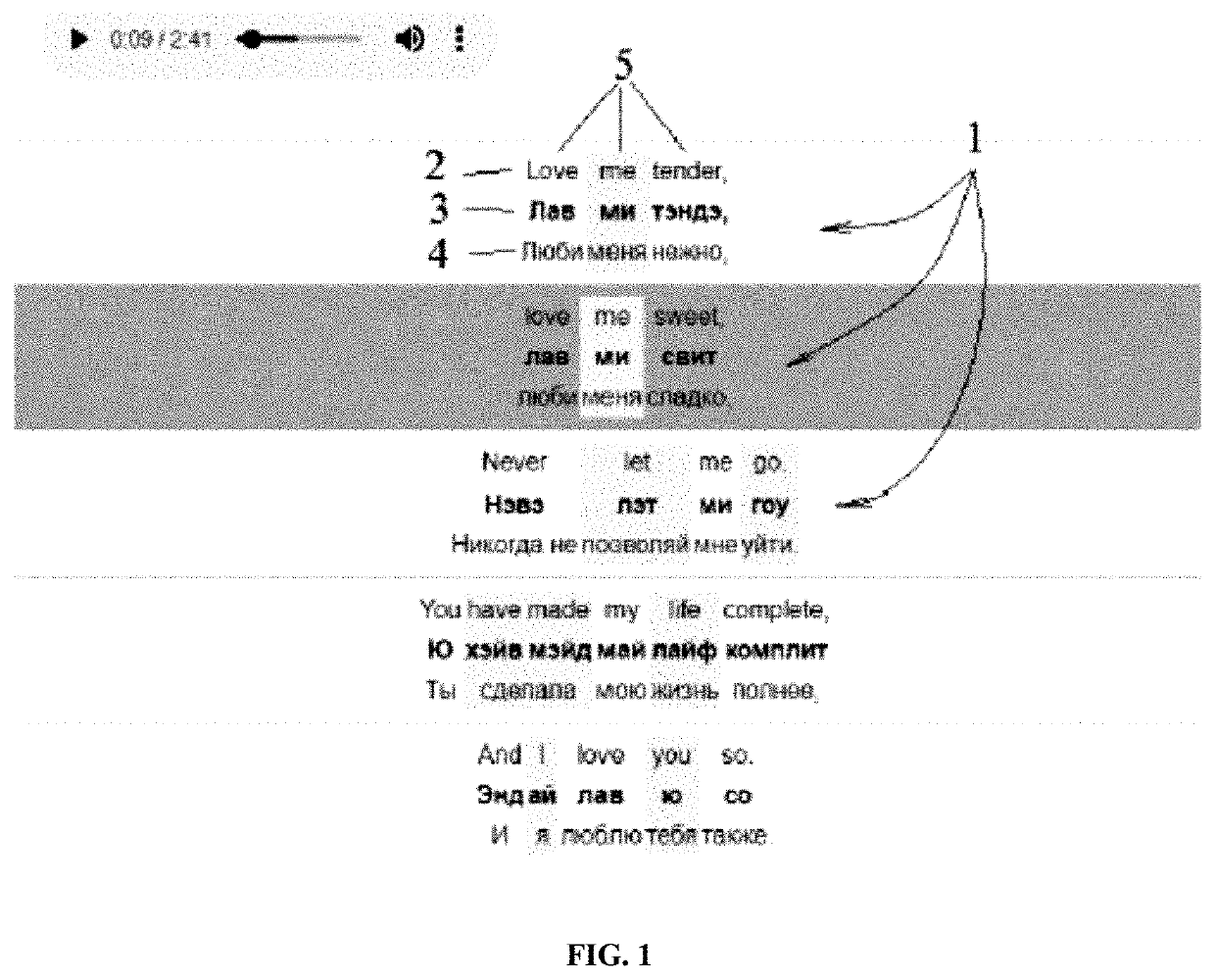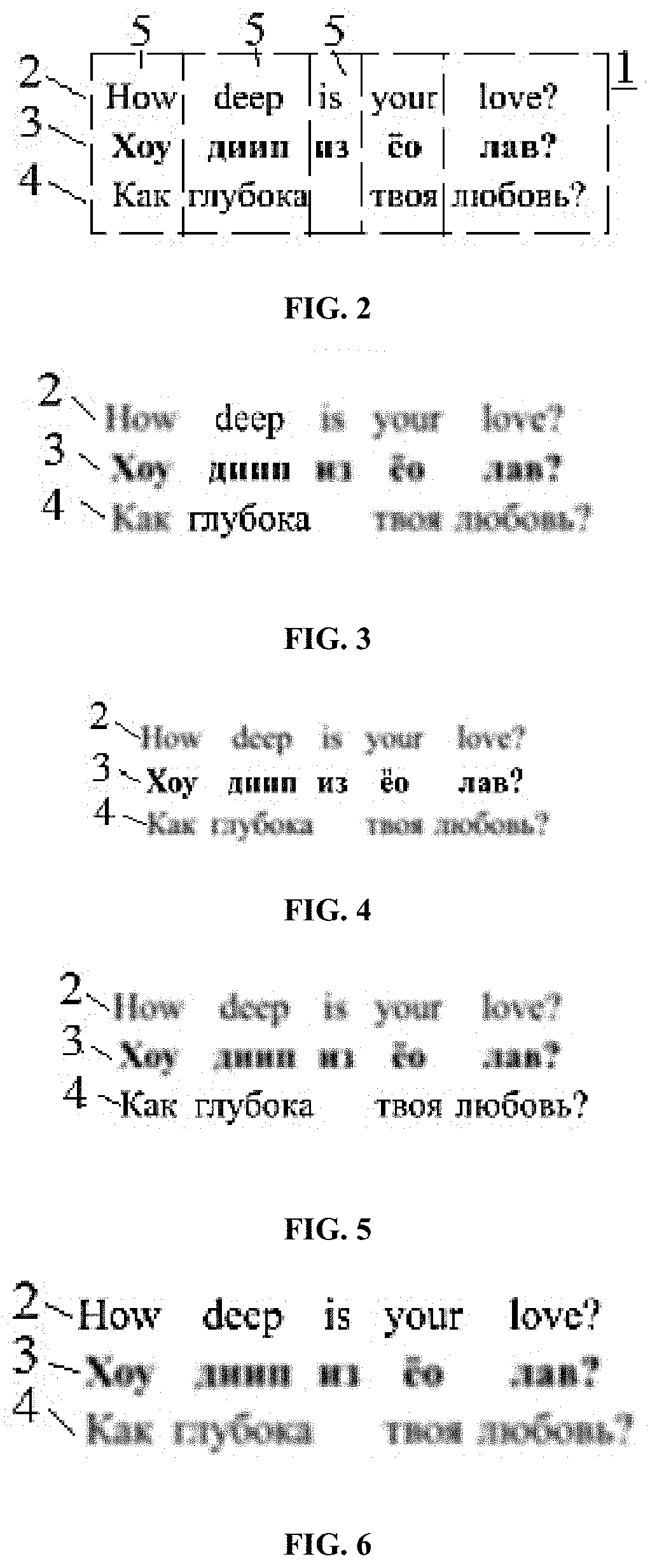Method for memorizing foreign words
a foreign language and language technology, applied in the field of methods for memorizing words, can solve the problems of inability to impart information about oral speech to the learner, inability to memorize foreign words using text, and inability to memorize foreign words, so as to reduce the number of repeated listening, increase the number of memorized foreign words, and reduce the time for memorization.
- Summary
- Abstract
- Description
- Claims
- Application Information
AI Technical Summary
Benefits of technology
Problems solved by technology
Method used
Image
Examples
Embodiment Construction
[0025]It is known that a person's abilities have very specific parameters both with respect to the volume of memorized information, and to the rate of response to an external stimulus and the possibility of perceiving the presented external information. For example, a person's ability to memorize an information that was showed one time for a short period, on average, is from 5 to 9 units of information (which corresponds to the number 7±2) (. M., : , , 2008, . 153 / Kozubovsky V. M., General Psychology: Cognitive Processes, Minsk, 2008, p. 153). For a learner who is unfamiliar with the phonetics of a foreign language, in which the studied song sounds, this type of information will be the phonemes and syllables of the foreign speech. As a result, with a single presentation, a person is able to memorize phrases with a duration of about 5-9 syllables or about 2-4 foreign words.
[0026]At the same time, despite the fact that the size of a person's immediate memory is limited to seven units ...
PUM
 Login to View More
Login to View More Abstract
Description
Claims
Application Information
 Login to View More
Login to View More - R&D
- Intellectual Property
- Life Sciences
- Materials
- Tech Scout
- Unparalleled Data Quality
- Higher Quality Content
- 60% Fewer Hallucinations
Browse by: Latest US Patents, China's latest patents, Technical Efficacy Thesaurus, Application Domain, Technology Topic, Popular Technical Reports.
© 2025 PatSnap. All rights reserved.Legal|Privacy policy|Modern Slavery Act Transparency Statement|Sitemap|About US| Contact US: help@patsnap.com


